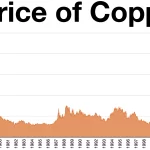The European Central Bank has taken a highly anticipated decision to keep its interest rates at their current levels. This reflects a prudent stance in the face of persistent inflation and uncertainty. The ECB has been able to confirm its inflation predictions with the latest data, which led the bank into a waiting-and-see attitude.
Analysis of inflation
The trend of inflation indexes stabilizing or even reversing in June, despite a brief rise in May because of transient factors. The profit margins of companies have helped to reduce some of the inflationary pressures that were caused by wage increases.
Despite the fact that the domestic pricing pressures are particularly high in the service sector, it is likely that the inflation rate will continue to be above the ECB target for the rest of the year.
Perspectives on policy
The ECB is committed to returning inflation back to the 2% range that it has set as its target. This requires a conservative approach when setting interest rates. The Governing council has stated that it is willing to continue to use restrictive interest rates in order to fight inflation.
The Council, however, emphasizes the importance of a data driven strategy. It continuously monitors economic indicators, trends in inflation, and its own monetary policies to inform decisions on rate adjustment.
By not committing itself to a fixed interest rate, the ECB keeps its monetary policies flexible. It will instead base its future rate changes on the changing economic conditions and success of their policies.
The ECB can adapt to changing economic conditions by using this approach.
Euro Impact
The ECB decision to maintain interest rates could have multiple implications for the Euro. Investors will watch for any dovish signs that could indicate future interest rate reductions. These signals may weaken the Euro because of the effect that lower interest rates have on the currency.
Future expectations and a balanced message
The ECB sent a message of balance following its most recent meeting. The ECB acknowledged that, while some of the price pressure is being absorbed by corporate profits, inflation in the domestic market remains high. Further evidence was needed to consider another rate change.
ECB president Christine Lagarde has already hinted at this outcome. Investors are now focusing on the meeting in September. The comments she makes at the press conference following the meeting will be carefully scrutinized to see if they hint at future policy decisions.
The ECB reiterated that it will use data and meet-by-meeting to determine the right level of and duration for interest rate restrictions. The ECB will remain flexible and responsive as a result of this stance.
Market Reactions
The markets are pricing in two or more rate reductions over the rest of this year, and five or more by next year’s end. In recent weeks, no ECB official has publicly challenged this opinion. The central bank was criticised in the past for making too many promises about its future actions, including a rate reduction scheduled to take place on June 1. This commitment, made months before, led some policymakers and economists to question it when data revealed increased wage and price pressures.
In the face of ongoing concerns about inflation, the ECB has decided to keep interest rates at current levels. The ECB uses a flexible and data-driven approach to navigate the complicated economic landscape. Investors are looking for clearer direction on the future. Market participants are closely watching for signals as the September meeting nears. They will be looking out for the ECB’s next moves in managing inflation and supporting the economy.
The post ECB maintains interest rate stability, warns of persistent inflation and signals caution may be updated as new information becomes available.
This site is for entertainment only. Click here to read more






